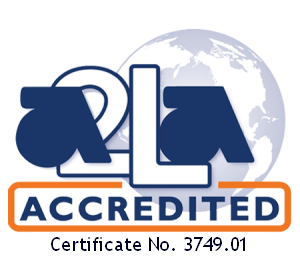A recent paper challenge scenario sent to our clinical bacteriology program participants presented a case of contaminated blood agar plates with beta hemolytic colonies that showed small Gram-positive bacilli when observed in a Gram stain. Participants were offered a series of possible answers on how to handle the scenario:
- A. Follow what the technologist has done after performing the Gram smear.
- B. Don’t bother to identify the contaminant further.
- C. Identify the contaminant and then use those plates which don’t show the contaminant.
- D. Destroy all the plates, request immediate re-supply with a different lot number, and educate the technologist(s) about the clinical risk to handling the unknown contaminant on the open bench.
- E. Don’t allow technologists to review supplies of bacterial culture media
- F. Sue the supplier.
The best answer
Option D was considered the best answer. This response ensures the integrity of culture media used in clinical microbiology and mitigates the risk of contamination-related diagnostic errors or laboratory-acquired infections associated with an unknown contaminant. Contacting the supplier for re-supply would also serve to alert them to the need for an internal review to prevent further contamination and distribution. Interestingly, immediately after the Paper challenge results were published, CMPT ran into the very same scenario. When contacting the supplier, we were notified that the supplier had received a few other reports from laboratories observing the same contamination and were therefore performing an internal investigation. CMPT discarded all the plates from that lot and requested re-supply with a different lot number.
Other answers – why not
Option A reflects passive risk acceptance and a breakdown in quality assurance protocols. Selection B, failing to identify the contaminant further, is considered a dismissal of standard safety practices. Option C fails to recognize the risk that non-visible or low-level contamination may still affect plate sterility.
The nitty gritty
The challenge involved a batch of sheep blood agar (SBA) plates, with apparent nonuniform contamination with colonies of small Gram-positive bacilli demonstrating minor beta-hemolysis. Such findings raise concerns for contamination with potentially pathogenic organisms, such as Listeria monocytogenes, which poses a biosafety risk, especially if handled on an open bench without appropriate containment [1]. Given the possibility of Listeria contamination, at least the lot of plates should be quarantined for a sufficient period of time to identify the contaminant and determine if it is more likely to pose a threat to infection of laboratory staff (i.e. unlikely if only a couple of colonies of a coagulase-negative staphylococcus or other common contaminant). Further, the supplier should be contacted to ensure that information is supplied to other customers regarding the possibility of contamination of the lot with Listeria. In this case it is prudent to discard the entire lot. From a diagnostic standpoint, the use of contaminated culture media introduces the risk of false-positive results in diagnostic specimens when contaminants are misidentified as clinical pathogens, or false-negative outcomes if contaminants outcompete the growth of true pathogens. Such inaccuracies can result in unnecessary laboratory workups, inappropriate antimicrobial use, delayed diagnosis, or patient harm. Destroying the entire contaminated batch represents a precautionary measure consistent with the Clinical and Laboratory Standards Institute (CLSI M22) [2]. Continued use of a compromised batch undermines quality assurance efforts and violates principles of good laboratory practice.

Featured article photo on Pixabay
With respect to Listeria monocytogenes specifically, it is important to note that this organism is found among multiple natural hosts (humans, sheep, cattle, goats), and that animal listeriosis occurs worldwide [3-5]. Thus, it can contaminate the raw materials used in media preparation. Indeed, there have been reports of Listeria monocytogenes pseudo-outbreaks caused by contaminated laboratory media related to listeriosis in the livestock supplying blood for culture media; the media had passed manufacturing quality control likely because of low level and nonuniform contamination [6].
From a lab safety perspective, Listeria monocytogenes is classified as a Risk Group 2 pathogen. Listeriosis is a serious illness particularly affecting neonates, pregnant women, older adults, and immunocompromised individuals [3]. Clinical manifestations are variable including septicemia, meningoencephalitis, and perinatal infections. A case of cutaneous listeriosis has been described in a laboratory technician in 1957 (unclear exposure), which reinforces the importance of conducting local risk assessments and following biosafety practices [4].
MAIN EDUCATIONAL POINTS
- Culture media integrity is mandatory; the presence of any contaminant in a given lot of plates warrants potential rejection of the entire lot as contamination may be low level or nonuniform, and batch sterility cannot be assured. Media used for clinical diagnostics must be sterile and quality-assured to prevent erroneous results and patient harm.
- Unknown contaminants pose a potential biosafety hazard and open-bench handling increases the risk of laboratory-acquired infection and cross-contamination. Technologist training is essential to recognize contamination, understand its clinical and safety implications, and follow proper escalation procedures.
- Supplier accountability and documentation: Laboratories should inform suppliers of the issue, request a replacement lot, and document the incident as part of internal quality control and continuous improvement efforts.
ACKNOWLEDGEMENTS
This article has been modified from the CMPT Paper challenge PC251 critique. The paper challenge critique was written by medical microbiology residents Dr. Bushra Al-Hothli and Dr. Genevieve Amaral, with input from Dr. Robert Rennie (University of Alberta). We thank CMPT’s Clinical Bacteriology technical committee for their continued support and expertise.
REFERENCES
- Baron, E. J., Miller, J. M., Weinstein, M. P., Richter, S. S., Gilligan, P. H., Thomson, R. B., … & Snyder, J. W. (2022). Manual of Clinical Microbiology (13th ed.). ASM Press.
- Clinical and Laboratory Standards Institute (CLSI). (2021). M22-A3: Quality Control for Commercially Prepared Microbiological Culture Media (3rd ed.).
- Farber, J. M., & Peterkin, P. I. (1991). Listeria monocytogenes, a food-borne pathogen. Microbiological Reviews, 55(3), 476–511. https://doi.org/10.1128/mr.55.3.476-511.1991
- Public Health Agency of Canada (PHAC). (2021). Pathogen Safety Data Sheet – Listeria monocytogenes. https://www.canada.ca/en/public-health/services/laboratory-biosafety-biosecurity/pathogen-safety-data-sheets-risk-assessment/listeria-monocytogenes.
- Swaminathan, B., & Gerner-Smidt, P. (2007). The epidemiology of human listeriosis. Microbes and Infection, 9(10), 1236–1243. https://doi.org/10.1016/j.micinf.2007.05.011
- Matanock A, Katz LS, Jackson KA, et al. Two Listeria monocytogenes Pseudo-outbreaks Caused by Contaminated Laboratory Culture Media. J Clin Microbiol. 2016;54(3):768-770. doi:10.1128/JCM.02035-15



